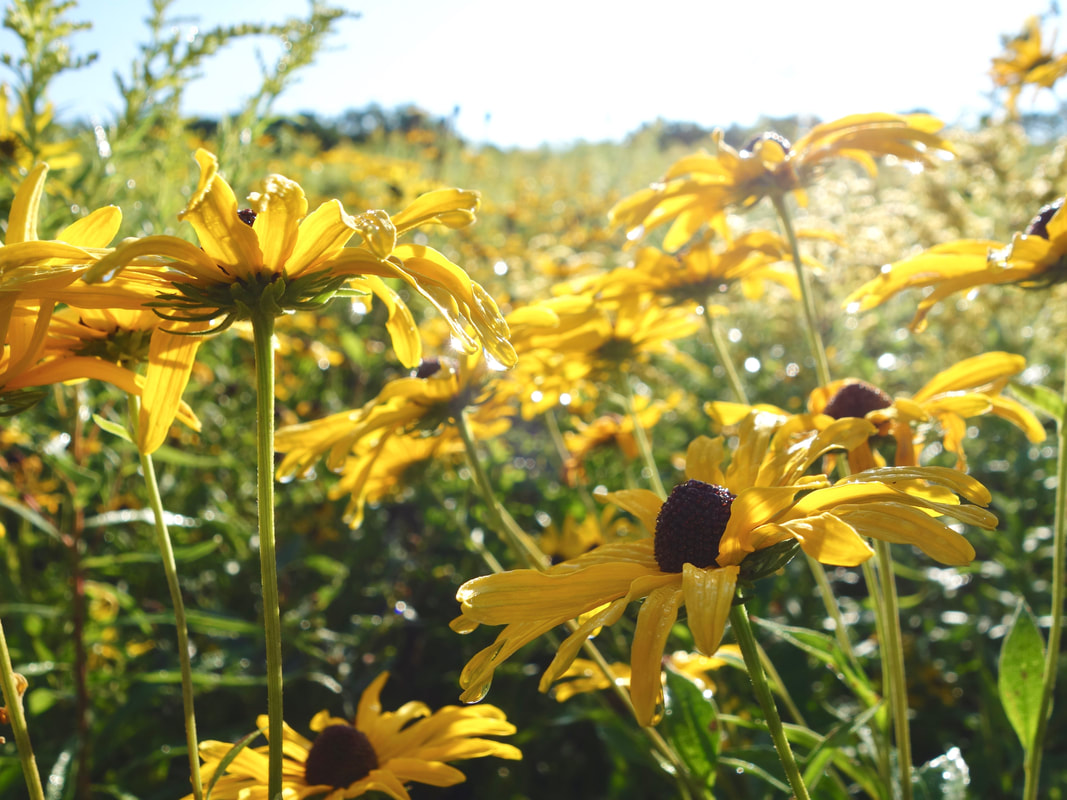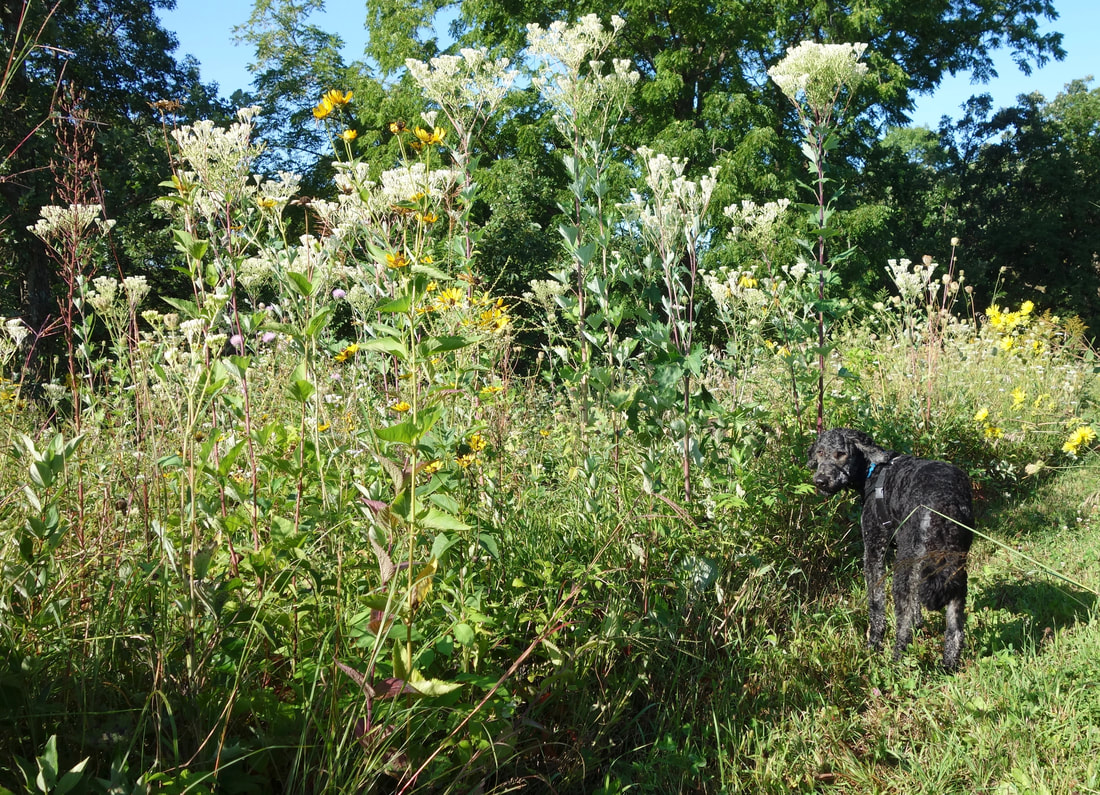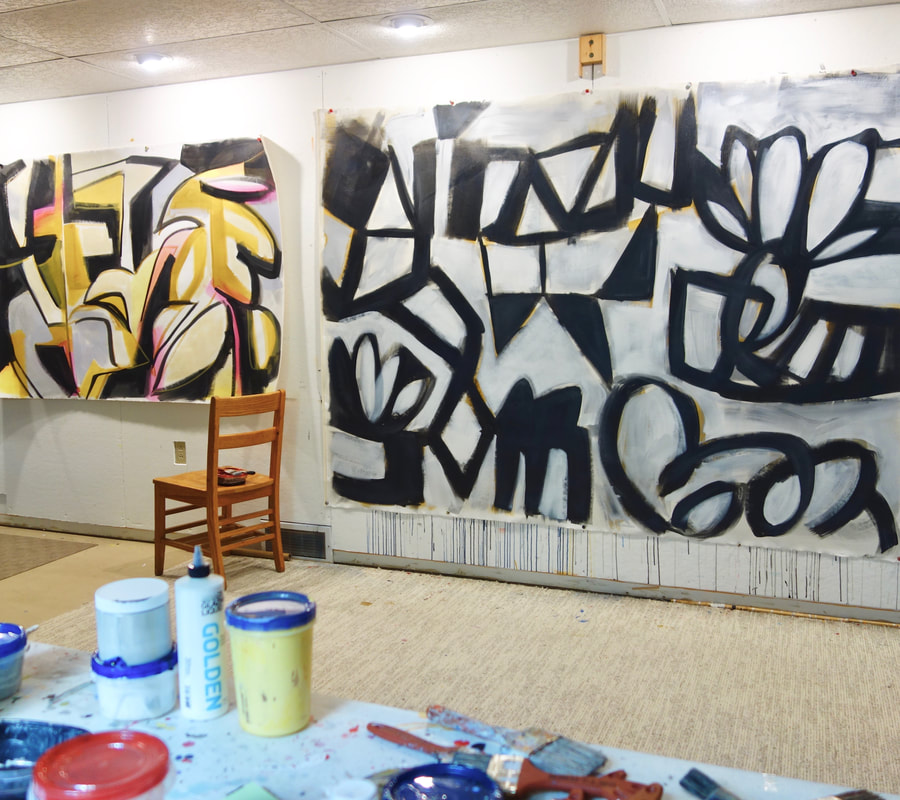|
Honestly, I get all emotional walking through acres of restored prairie in late August. It's that plaintive, wistful feeling that comes from life bumping into skin bruised by grief and yet touched by grace. That longing that doesn't even know what it wants, but longs for it anyway.
Prairie speaks to me. I like to listen. Cicadas buzz. Bluebirds gather. Unhappy to have her nut-burying extravaganza interrupted, a flustered squirrel is scolding my pup from the upper branches of an old oak. July's peak wildflower explosion of colors is over. Now yellow runs the show. Silphium and Big bluestem tower overhead, dripping cool morning dew onto my face as I brush past. Red is just beginning to touch the leaves of the sumac. Even though I'm not ready for summer's end, I can feel it coming. Here in this prairie, I can breathe deeply and give it a grateful and reverent goodbye. Only a teeny, tiny fraction of our original, native prairies remain. Once the dominant ecosystem here, isolated remnants can still be found near old cemeteries, along roadsides and railroad tracks, and on steep bluffs, where accessibility, and plowing, is difficult. The good news is–prairie restoration. Local, state, and federal governments, schools, businesses, and homeowners have been planting native prairie species and working to create larger prairie ecosystems. These prairies provide food and shelter for native insects, mammals, reptiles and amphibians. And the good medicine of solace and respite to humans spending time wandering and tending them.
0 Comments
|
Author
Artist and naturalist Michelle Louis has a vigorous curiosity about the natural world. Her energetic, investment-quality paintings bring balance and harmony Archives
June 2024
©2023 Michelle Louis All rights reserved. Content and images are property of the artist.
Categories
|



 RSS Feed
RSS Feed